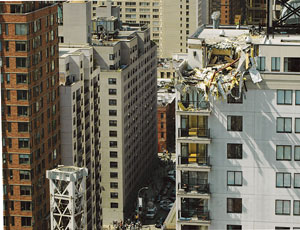After six months and nearly $4 million, New York City’s Dept. of Buildings on Feb. 3 recommended 41 measures to increase regulations for crane, concrete and excavation work. But industry experts say the standards, if implemented, may create more headaches and unnecessary costs. The city assembled a team of more than 30 engineers, including experts from Skokie, Ill.-based forensic consultant CTL Group. The measures chiefly focus on crane and hoisting operations. At the top is a need “to track critical components of tower cranes,” an idea that area experts casually call “CraneFax,” referring to a similar service for cars.

Coming less than a year after two fatal crane collapses killed nine people in Manhattan, the list is ambitious. “This all requires us to be an enforcer,” says Buildings Commissioner Robert LiMandri. “We expect some of [the recommendations] will be able to be up and running in three months. Others will take longer.”
One idea that could soon become reality is to require cranes entering the city to be examined by inspectors qualified under U.S. Occupational Safety and Health Administration standards. “All we care about is that the cranes that arrive here are as safe as possible and when they go up that they’re put together and inspected by the most qualified people,” says LiMandri.
One of the most debated measures—the so-called CraneFax project—is a longer-term goal. The industry for years has kicked around the idea of such a tracking system, similar to CARFAX, a service that provides a detailed vehicle-history report. LiMandri says it would require a constant dialogue between original-equipment manufacturers, crane owners and DOB. “We would be on notice that a part had been repaired to OEM standards and is safe to go back to work,” he says. “We want to close all the gaps, and we have to start somewhere.”
Rob Weiss, vice president of Cranes Inc., says that tracking crane parts, while a good idea, is not yet possible because they are not serialized and freely move across state lines. “When the lifeblood of the construction industry relies on cranes outside of your jurisdiction, you can’t track them,” he explains.
Another moving target, LiMandri adds, is the establishment of safety requirements for older cranes. The study looked at such regulations from around the globe. In Australia, cranes must be torn down and rebuilt after 10 years. In Singapore, the public is less trusting of industry—older tower cranes must simply be junked. “Somewhere on that continuum there is the ability to have cranes that are older and are safe enough for use but to also encourage newer cranes and technology,” LiMandri says.
Some sources applaud LiMandri’s effort, but others warn the rules may conflict with national standards, including a proposed OSHA regulation for cranes and derricks that will have a public hearing in Washington, D.C., on March 17. The city may go “far beyond what OSHA would require and in some cases, you could argue that there is a conflict,” says Bill Shuzman, executive director of Allied Building Metal Industries, New York City. “But the bigger problem is that we have broad-brush recommendations, and the devil is going to be in the details.”
Weiss, who sat on OSHA’s negotiated rule-making panel, says it is unnecessary to place an age limit on cranes as long as they are maintained properly. But he gives DOB credit for proposing to relax “prototyping” of new models. “What New York City is contemplating is the concept of an approved vendor,” he says. “It’s still odd because everything falls under the discretion of the commissioner, but it could be a step in the right direction.”
Frank Bardonaro Jr., president of Bensalem, Pa.-based AmQuip, argues that a new Philadelphia rule he helped push is more comprehensive; it requires inspectors to be certified. “For $3,999,990 less and a pot of coffee, [New York] could have done what we did,” says Bardonaro. Philadelphia may yet again be a step ahead. Last year, Bardonaro registered Cranefax.com’s domain and plans to offer it soon as “a free site available for crane users, owners and manufacturers," he says. But he may consider selling it if the price is right, he adds.











Post a comment to this article
Report Abusive Comment